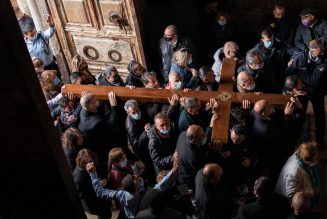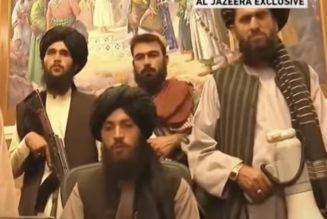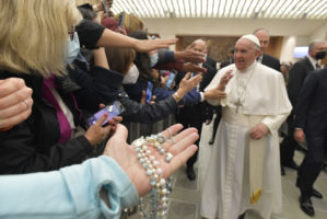ROME – Under the bold heading of “The World After the Pandemic,” the most recent issue of Foreign Affairs is devoted to the lessons to be learned from the experience of the COVID-19 coronavirus. According to the authors of the lead piece, the main point is that the next global contagion isn’t a matter of if, but when, so planning should be underway now.
Michael Osterholm, Director of the Center for Infectious Disease Research and Policy at the University of Minnesota, and Mark Olshaker, a writer and documentary filmmaker, say that as bad as it’s been, the coronavirus isn’t actually the “Big One” that keeps public health experts up at night.
Instead, they say, that’s likely to be a novel version of influenza akin to the pandemic of 1918, which raced around the world in little more than a year and caused some 100 million deaths – roughly 400 million by today’s population size, as opposed to the 400,000 deaths so far due to COVID, meaning a contagion 100 times more lethal.
The coronavirus, they argue, has exposed failures both in long-term readiness and also short-term response.
Resources, they point out, were hardly the problem: “After all, in the past two decades, the United States alone has spent countless billions on homeland security and counter-terrorism to defend against human enemies, losing sight of the demonstrably greater threat posed by microbial enemies; terrorists don’t have the capacity to bring Americans’ way of life to a screeching halt, something COVID-19 accomplished handily in a matter of weeks.”
Looking to the next outbreak, Osterholm and Olshaker urge a military-style response, meaning preparing not for a war you’re actually fighting but one that you know may one day come. Militaries, they point out, don’t buy tanks or missiles to use today, but for possible deployment in the future.
In the same way, they argue, governments today ought to be stockpiling personal protective equipment for health care workers, promoting domestic capacity to manufacture testing devices in real time, and investing in a massive research campaign targeted at developing a universal influenza vaccine.
Applied to the Catholic Church, the same question can profitably be asked: What would readiness for the next great global pandemic look like?
Here’s one bold suggestion: The Vatican might want to consider creating a “Dicastery for Disasters.”
Okay, granted, that’s probably not the verbiage the Vatican would use. It would be something far more cumbersome, such as “Dicastery for Promoting Human Solidarity in the Context of Unforeseen Calamities” or something like that. But whatever it’s called, the central headquarters of Catholicism arguably needs an office dedicated to preparing the Church for what we all know is certain to come sooner or later.
It needs to be in the Vatican, because by definition, pandemics have no respect for national or ecclesiastical boundaries. In a 21st century world, in which air travel means people and good can move from one corner of the planet to another in a matter of hours, pandemics are inevitably a global phenomenon requiring a universal response.
For such an office to be effective, it couldn’t follow the script of most Vatican departments. It would have to be international, not largely Italian, with its work conducted mostly in English since that’s the language of the international medical community as well as most international humanitarian and charitable organizations. Its leadership would have to be an ecclesiastical heavy-hitter, not someone with an impeccable pedigree but no ability to move the ball in the real world of Vatican politics.
Among its responsibilities would be the following.
First, it would coordinate pandemic preparedness plans among dioceses around the world. Contrary to popular mythology, the Catholic Church is not a rigidly top-down organization in which the Vatican controls everything. In reality, diocesan bishops are more like feudal lords, pretty much supreme in their own territory. That model, however, leaves the Church terribly vulnerable to unevenness and contradictions when it comes to global threats, and somebody needs to be empowered to ensure some reasonable uniformity.
Second, it would work with Catholic charitable organizations around the world to develop a stockpile of resources certain to be needed when the next great pandemic hits. They would include basic supplies of food and water, first aid kits, protective gear, and so on. The Church obviously can’t remedy failures of governments to deliver such basics, but it can do what it can, especially for the most vulnerable.
Third, it would identify the greatest spiritual needs during a pandemic and develop a set of “best practices” to help dioceses and other Catholic entities. Among other things, it would sift through the experience of the coronavirus to find the most compelling forms of virtual spirituality and also in-person pastoral care that respects the limits of a lockdown, and then commission experts to plan for “ramping up” those initiatives when the next time comes.
Fourth, it would study the experience of the Church in all those places where restrictions on pastoral life were imposed by governments, and develop a set of guidelines for how to respond to those measures when the next public health emergency presents itself – in part, so bishops and other responsible Church leaders don’t feel like they have to make it up as they go along, which tended to be the case during the coronavirus.
Granted, the creation of such a new structure, and the expenses it would incur to accomplish the aims sketched above, would further strain what is already a bleak Vatican financial situation. However, the Vatican always somehow seems to find the money to do the things it believes are truly important, and it’s hard to imagine there’s much more important than being ready for the real “Big One.”
Follow John Allen on Twitter at @JohnLAllenJr.










